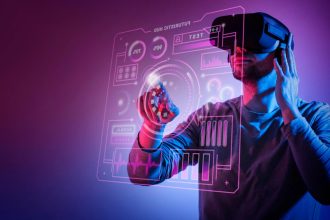The Fourth Industrial Revolution is happening right now, and AI-driven medical devices are leading the charge. This new era of innovation is touching every aspect of our lives, from how we work to how we live. Whether it’s a smartwatch or a remote diabetic monitor, these devices allow patients to control their health while doctors focus on what they do best: treating illnesses.
The use of FitBits and other medical devices has become culturally ubiquitous. People from all walks of life wear them nowadays. It’s as if wearing one says, “I’m a health-conscious individual.” We provide hardware engineering services that include integrating various smart medical devices. Hence we know about some trends in smart medical devices that promise to change our future.
What are the implications of an industry that’s made up of hundreds of billions in value and is growing rapidly? This overview looks at what the future might hold for smart medical devices.
Some hot trends in the smart medical device industry
The following are some of the hottest trends in the smart medical device sector.
Blockchain for enhanced security
You need to provide a high level of security in the medical sector. It is important to protect sensitive data as it moves from one end to another. Data safety has become an integral part of the entire process. One of the most popular security options is blockchain technology
Blockchain is a complex and decentralized network technology. All information gets stored in encrypted form with your private key but can be accessed quickly as needed. As blockchain is decentralized, it is virtually impossible to tamper with information. Also, it is very difficult for hackers to get hold of the information. As the information in a blockchain is dispersed amongst thousands of computers all over the world.
These features make blockchain a great trend to watch out for in the future.
Artificial Intelligence (AI) in Healthcare
Putting AI to use in the healthcare industry can help with information processing and decision-making. By using it, you can save time.
Additionally, AI and ML can be used to develop new pharmaceuticals while providing doctors with a good way to diagnose patients.
AI, for instance, is helping doctors analyze CT scans efficiently to detect COVID-19 fast.
Microsoft’s business intelligence had a huge impact on the healthcare industry. Recently they have developed 2 AI tools that help doctors save time and produce quality results. Project InnerEye does this by speeding up the 3D contouring process for radiotherapy, and Project Hanover catalogs content about biomedical research papers. This system helps reduce the time it takes cancer to be diagnosed. The clinicians also use this system to help decide which drugs they should administer to individual patients.
Augmented Reality and Mixed Reality in Healthcare
AR is an emerging technology that can transform the healthcare industry in many ways, such as
- making diagnosis easier
- improving remote care
- enhancing the quality of doctor’s visits
Augmented and mixed reality have been used in healthcare a lot. Mixed reality headsets, such as HoloLens 2, are among the most popular examples. Bleeding blood vessels can be monitored during surgery by a headset. This can make the process much easier for surgeons because they have the opportunity to multitask and monitor various aspects of the surgery at once.
The information captured from the head-mounted camera can help make these surgeries better. It can be used by other doctors in collaborative remote assistance to offer tips and advice. The view of the surgery from the headset includes detailed observation and is a great way for surgeons to train for complex surgeries. Since the device is holographic, it has applications like medical training. More specialized software solutions must be developed for these types of headsets to be effective. It seems like it might be a valuable tool for nurses, who are apparently using them to find veins with tough visibility.
The development of AR apps requires a significant amount of knowledge and effort. To succeed, the developers would need in-depth knowledge and relevant expertise.
IoT and Wearables
With wearables and IoT technologies becoming more popular, their potential in the healthcare industry has grown significantly.
The number of devices will continue to grow as more medical devices connect. The global IoT medical devices market is projected to reach 94.2 billion by 2026 from 26.5 billion in 2021.
Health wearables are one of the most important innovations in healthcare. They provide remote or self-monitoring to their wearers, which gives them a lot of value.
One of the most basic things a smartwatch can do is track a person’s heart rate. However, these devices are not just for monitoring heart rate. They may also have other features such as calorie counting, sleep tracking, etc. Wearables can also help you determine low blood oxygen saturation using specialized sensors. Healthcare providers are using wearables to rapidly test patients who may be suffering from this condition.
Smartwatches are improving in the accuracy of their measurement abilities. The photoplethysmography method uses light waves to measure blood volume and composition. Thanks to this technology, the smartwatch can now provide more data about one’s blood vitals. Healthcare providers can use this information to help advise patients and perform diagnoses.
Conclusion
As we enter the new decade, the global demand for emergent technologies will continue to soar profoundly. Smart medical devices can be the savior of chronic diseases, an aging population, and a whole range of other issues.
New technologies can often introduce unknown risks to their users. Criticisms of the 510(k) FDA qualification process have shown this. Improved collaboration and safety features in new smart medical devices can minimize these risks.
The potential impact of smart medical devices is exciting. This new technology brings hope that we can deliver better patient care. Excellent WebWorld is a company that specializes in smart medical devices. Contact us to leverage the power of smart medical devices for your benefit.















